This past week I had the opportunity to work in the IRRI Hybridization Unit where I received hands-on experience on how hybrid rice varieties are created. In this post I’ll be giving you an insight into what hybridization is and what the process consists of. One major takeaway I had from this experience was that I was surprised by how manually laborious the hybridization process is. In other words, because of its very crucial role in rice breeding, I was expecting the hybridization process to be a lot more automated.
So, what is hybridization?
Hybridization, specifically in the world of rice breeding, is the process of combining desirable genes found in two or more existing rice varieties, known as the parents, and to go on to produce true-progeny that contain the desired genes, making it superior to the parents.

In rice breeding, hybridization has been a critical resource used to create rice varieties that have:
- Increased yield potential
- Better resistance to drought and other abiotic stresses
- Better resistance to disease and pests
- Better grain quality
IRRI provides various hybridization services such as:
- Single cross hybrids, where 2 different parent types are crossed to create the first generation plants (F1), these F1 plants are allowed to self-pollinate to produce second generation (F2) seeds.

2. Double cross hybrids, where 2 different parent types are crossed to create first generation plants (F1), then 2 separate F1 plants are crossed to create the second generation (F2) seeds.

3. Top crosses, 2 different parent types are crossed to create the first generation plants (F1), then one of the F1 plants is crossed with an openly pollinated plant (non-recurrent parent) to create the second generation seeds (F2).

4. Back crosses, 2 different parent types are crossed to create the first generation plants (F1), then the F1 plant is crossed with one of the parents (recurrent parent) to create the second generation seeds (F2).

But, how is hybridization actually done?
Briefly, hybridization involves the emasculation of one of the desired parent rice plants, the pollination of this emasculated parent with the other desired parent, and the growing and harvesting of F1 seeds to go on to the next advancement.
But first there is a pre-emasculation procedure which consists of:
- Choosing healthy parent plants that possess desired traits.
- Isolating these plants in bowls.
- Tagging of the parent plants.
- Maintaining the parent plants with soil and irrigated tap water.
- Keeping the parent plants in the hybridization greenhouse until mature.
The emasculation procedure is done between 3-6pm and involves:
- Cutting off the top half of each spikelet to expose the anthers.
- Using a vacuum and pipet to suck out the anthers from each spikelet.
- Individually cover each panicle with a glassine bag to prevent the possibility of self-pollination.
- The emasculated plant becomes the female parent.

Diagram of a rice spikelet. During the emasculation procedure, each spikelet is cut from the Palea to the Lemma to expose the anthers.
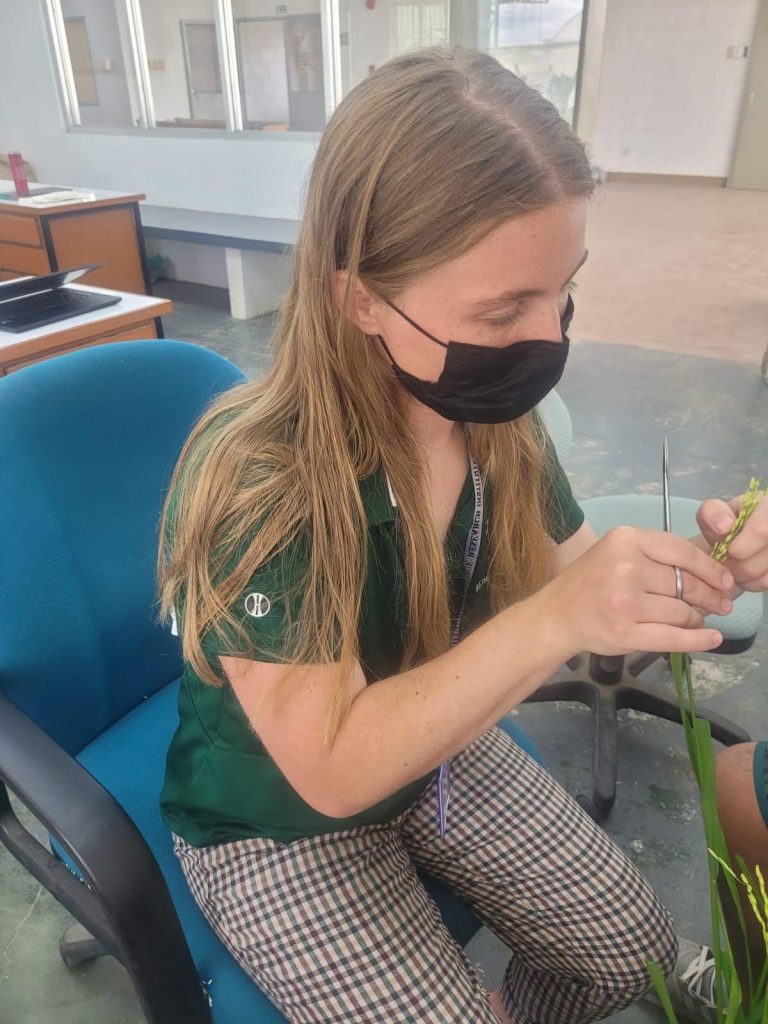
Cutting the spikelets to expose the anthers. 
Using a pipet connected to the vacuum to suck up the anthers (emasculation). 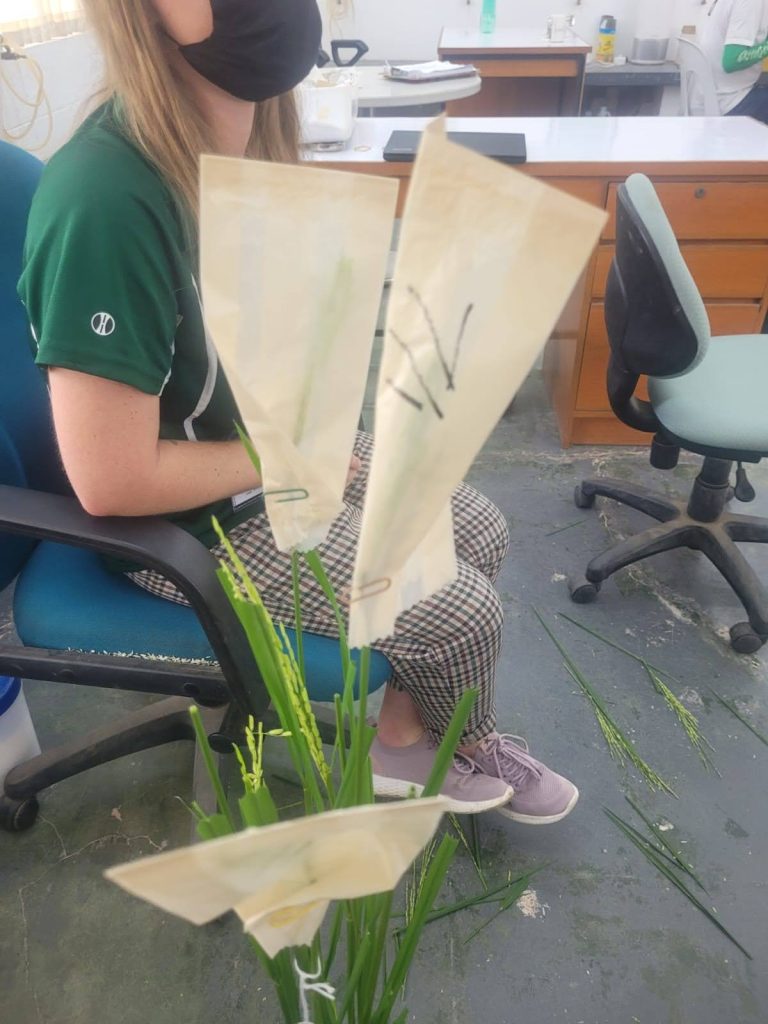
The emasculated rice panicles are covered with glassine bags.
Next, there is a pre-pollination procedure where:
- The healthy panicles of the parent male pollinator plants are chosen.
- The selected panicles are brought into the pollination chamber.
- The selected panicles are placed in small clay pots filled with tap water where the panicles are left for about an hour to allow the spikelets to open and the anthers to become exposed.
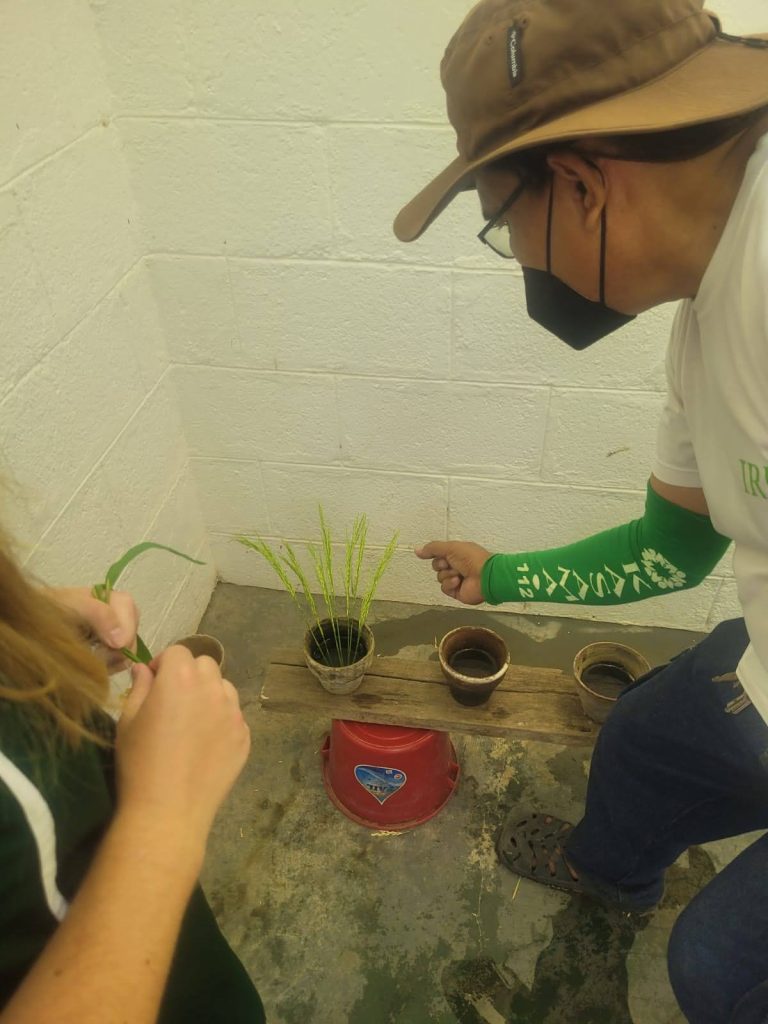
The panicles of the pollinator parent (male) are cut and brought into the pollination chamber where they are placed in clay pots filled with water.
The pollination stage of hybridization, which takes place between 8-11am, involves:
- Bringing the emasculated female plants inside the pollination chamber.
- Removing the glassine bag from the female plants.
- Carefully lifting the blooming pollinator-panicles (male) above the female and gently shaking to displace the pollen and ensuring that the pollen falls onto and into cut spikelets of the female.
- Covering the now pollinated female panicles with glassine bag again.
- Placing the pollinated plants in the nursery area.
- Allow the plant to mature.
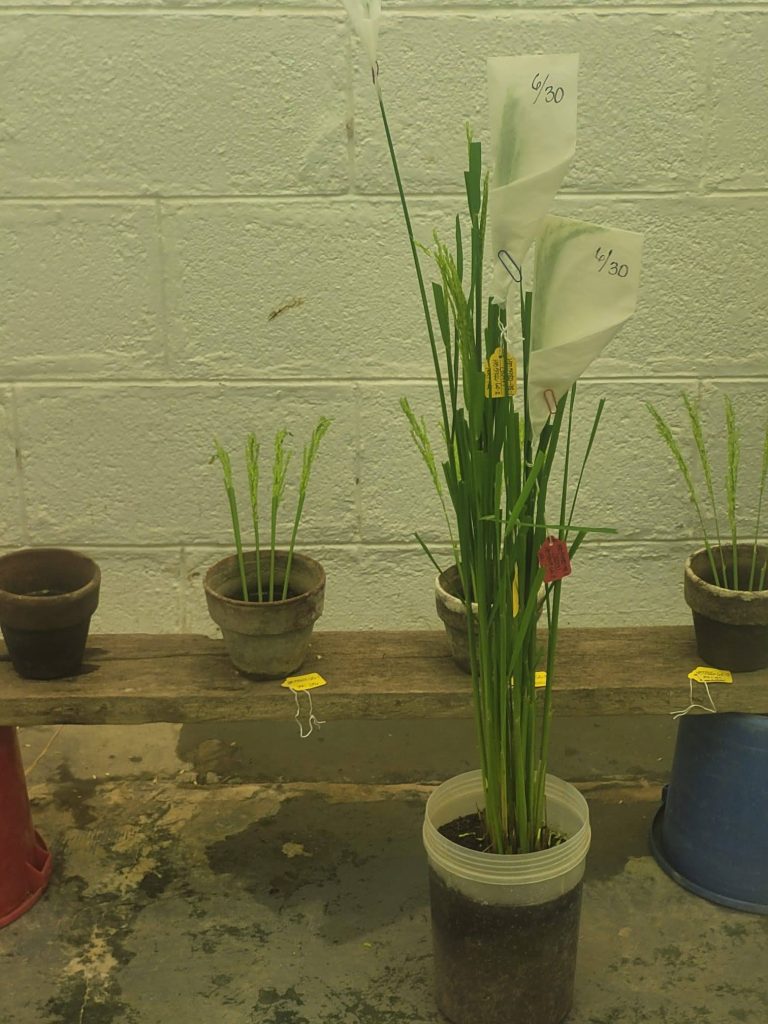
The pollinated parent plant panicles are covered in glassine bags.
The final stage of hybridization is harvesting and seeding which takes place 25 days after pollination. The F1 seeds are harvested and dried for 5 days, threshed, and are now ready for the next advancement.
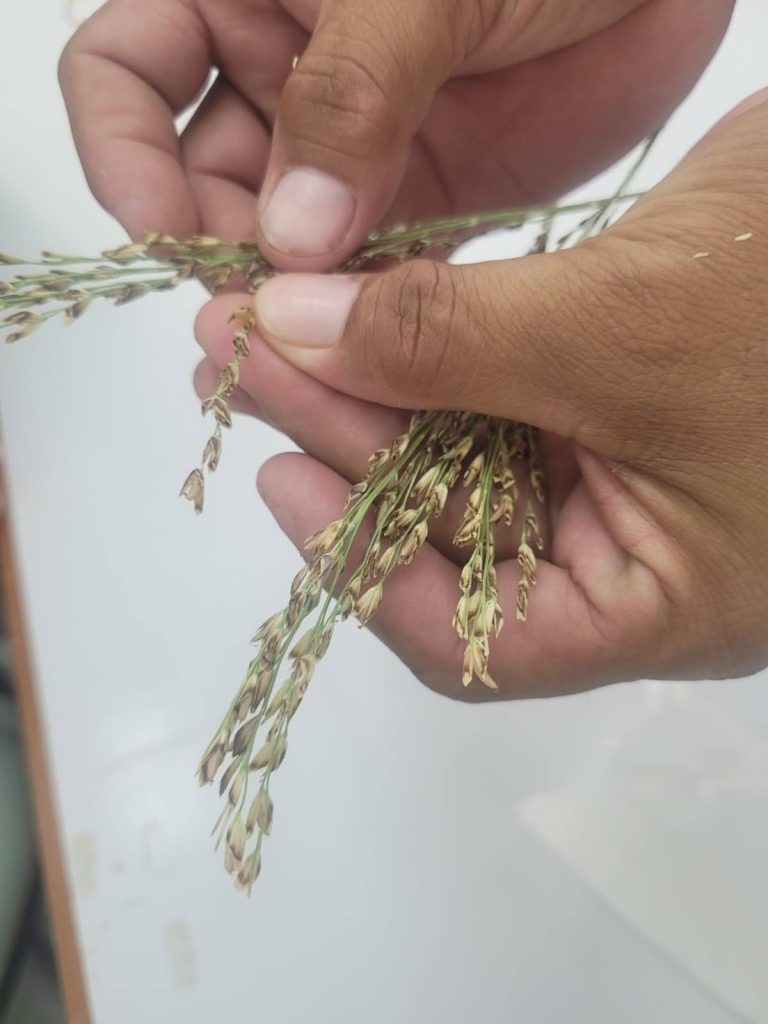
The F1 seeds are harvested 25 days after pollination. 
The F1 seeds are dried and ready for further advancement.
After each cross, the resulting plants undergo genetic testing to confirm that the plants are true hybrids — contain the desired gene from the parent plants.
So far, my time in the hybridization unit has been my favourite experience at IRRI. I found it extremely interesting to experience the practical application of plant breeding for specific traits as opposed to working with theoretical crosses and punnet squares.
Believe it or not, at the time of posting this blog I am more than halfway through my internship. It’s crazy how fast time flies!
